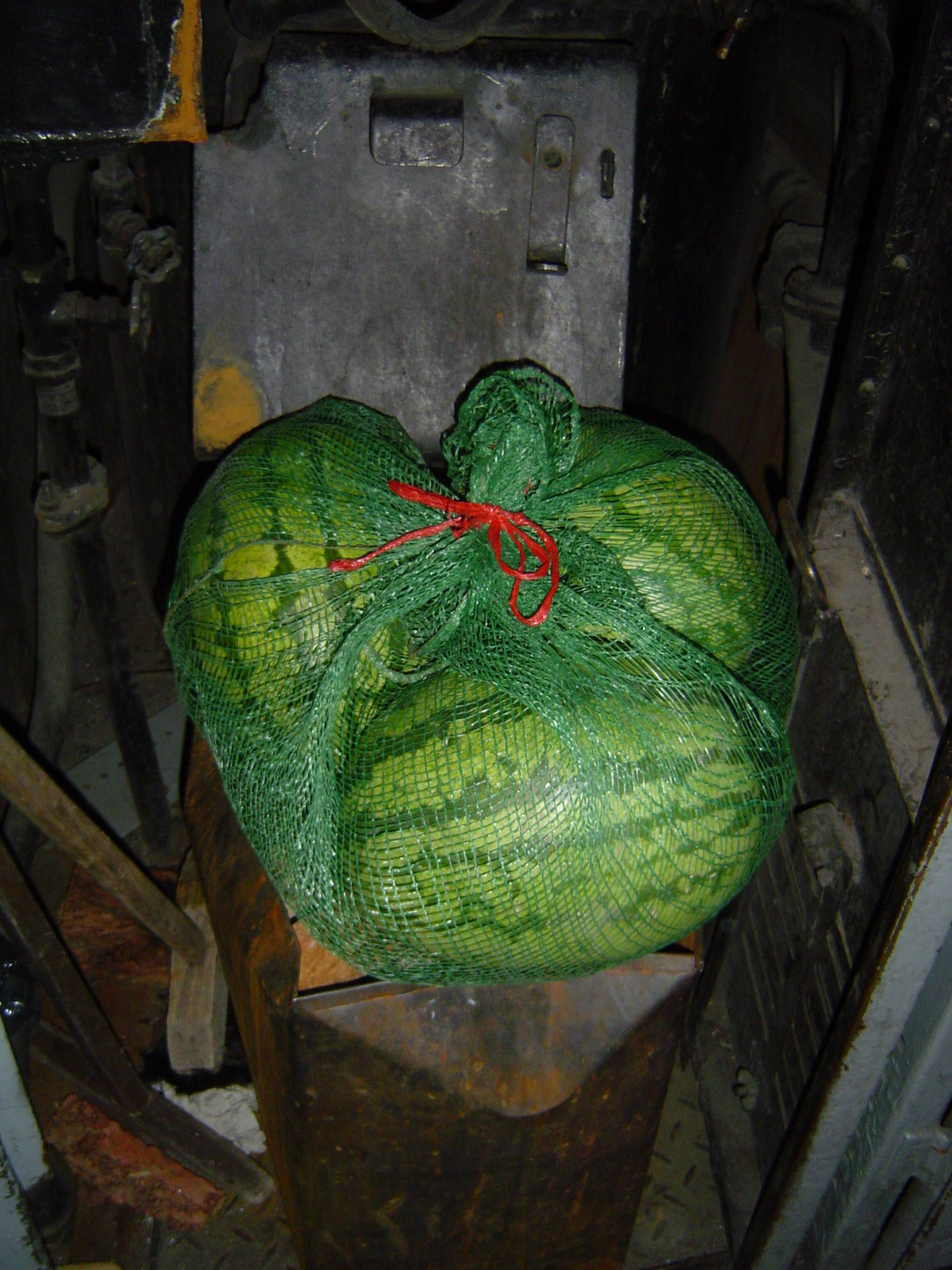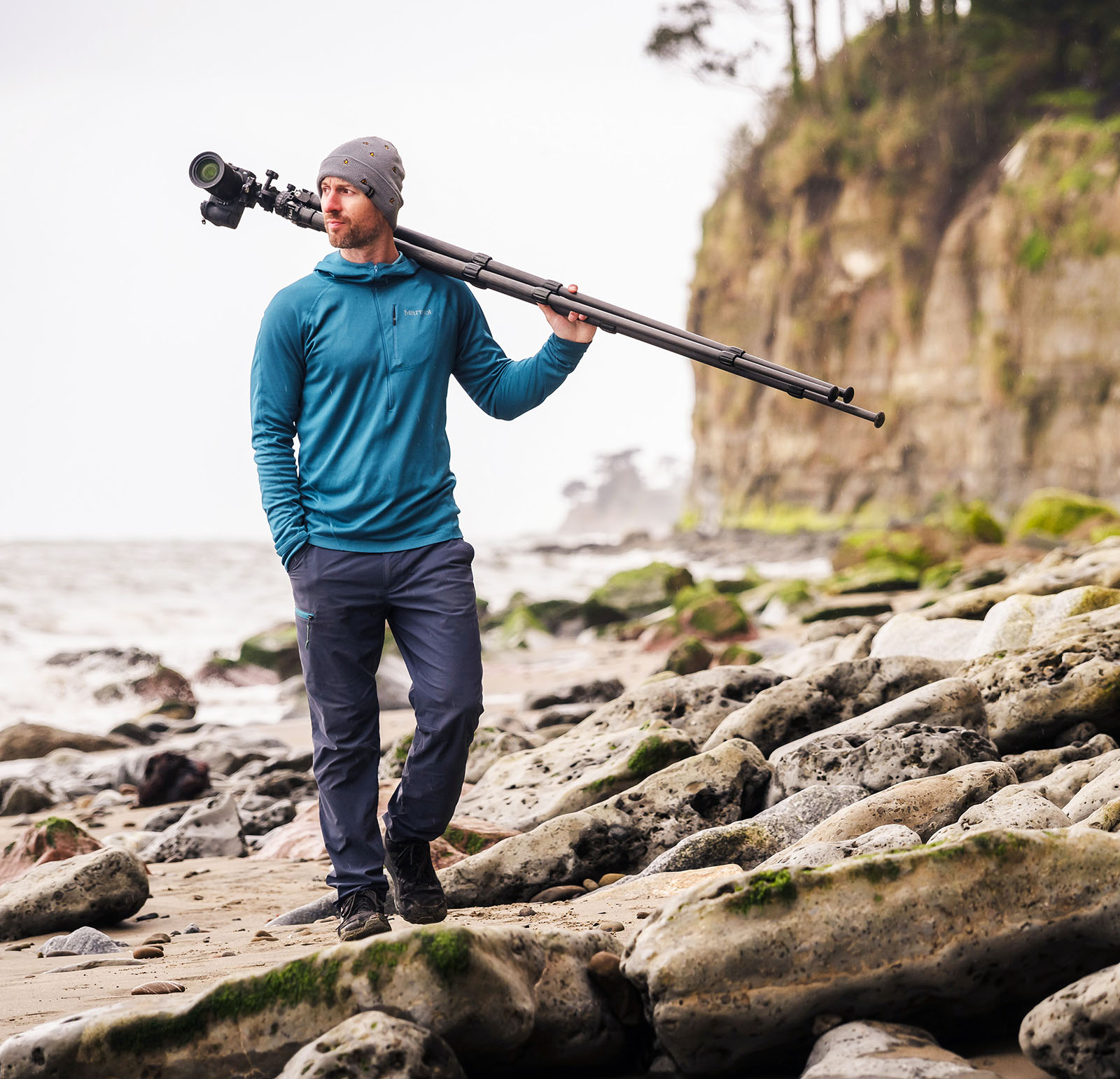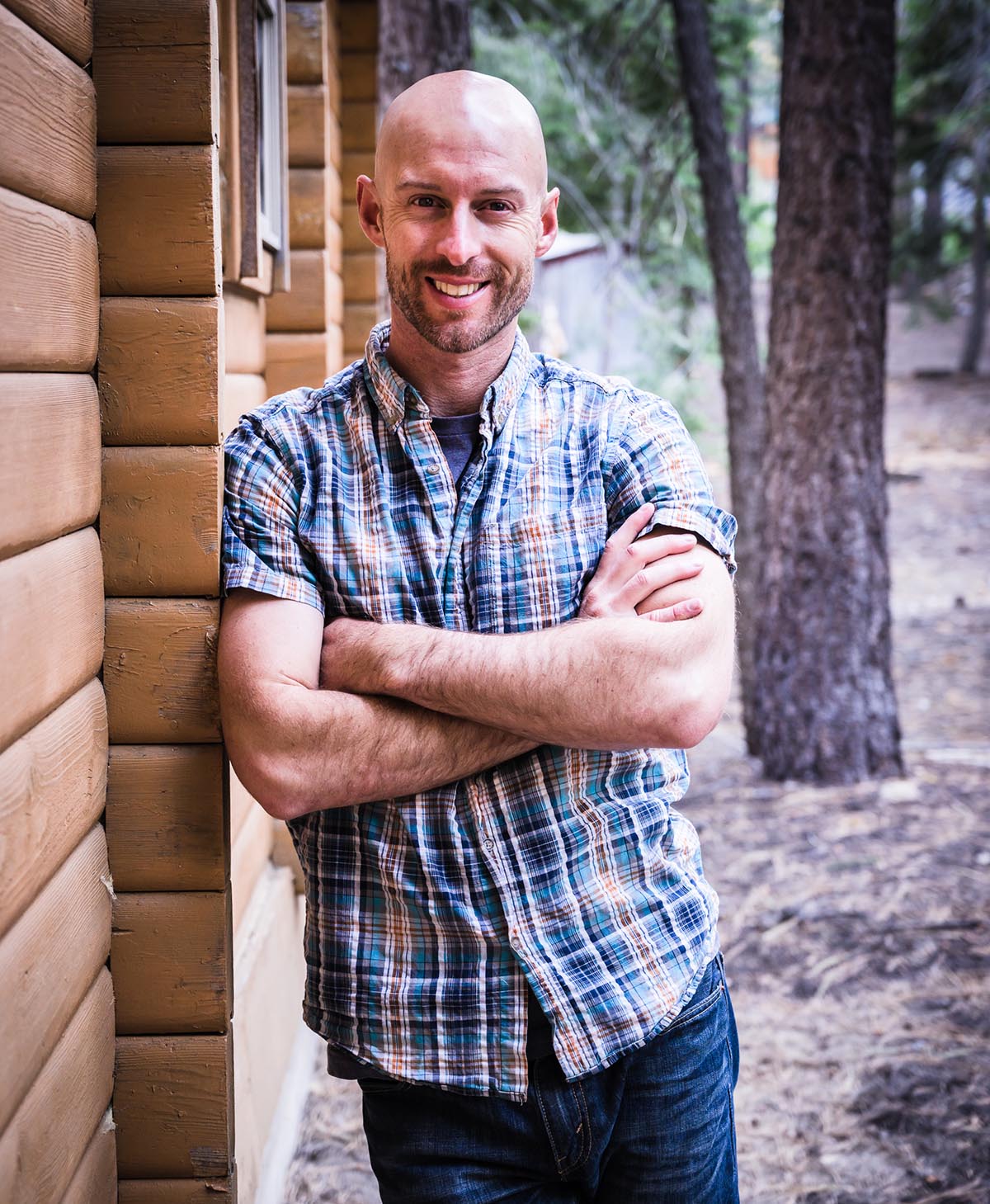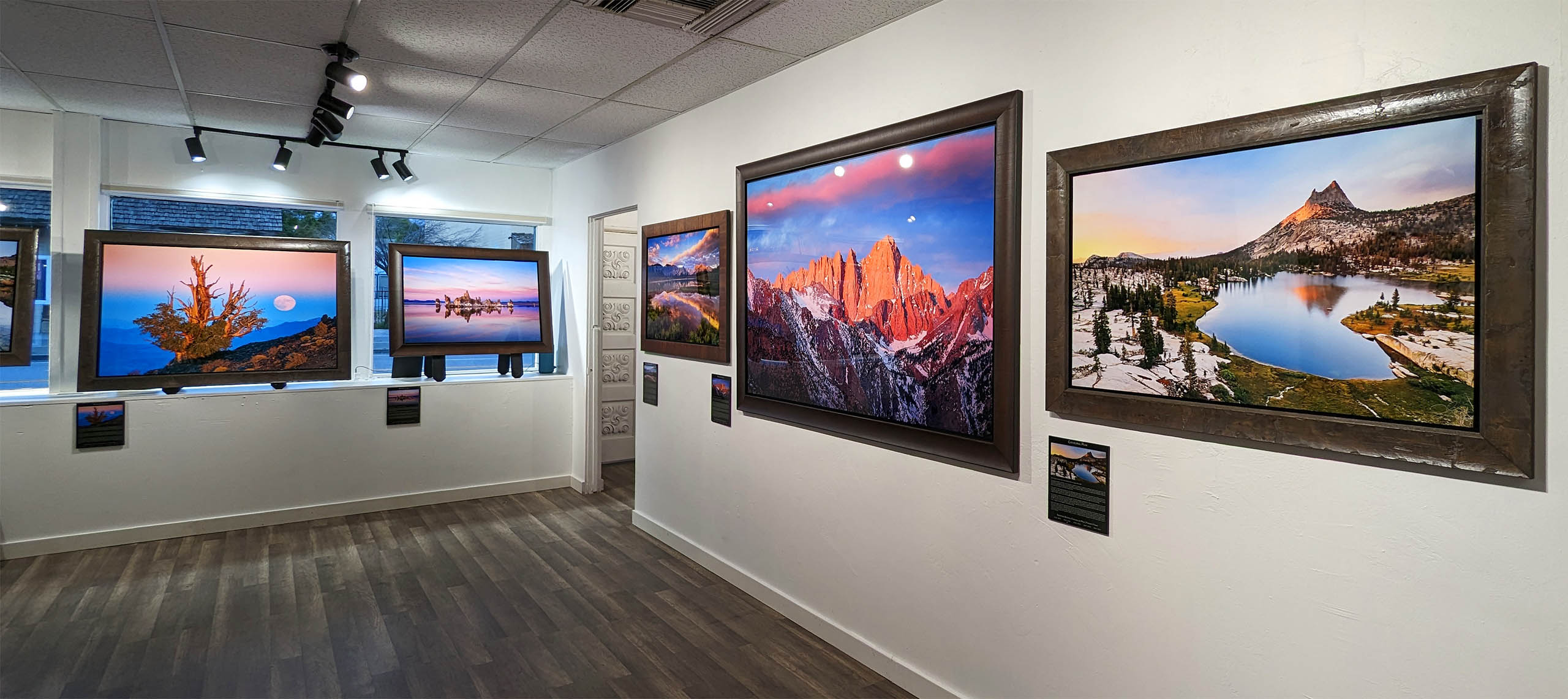It all started with watermelons. If there was space, there was a melon in it.
The train was bound for Ulaan Baatar from the border city of Zamiin Uud, taking families and months worth of provisions and goods for sale from the Chinese border into the capitol of Mongolia. The watermelon harvest had just finished and thousands of the sweet, juicy fruits were packed into the train to sell along the way. This glut of melon meat meant that if you didn’t claim a spot for your bag, or yourself, it would quickly be packed full of melons. Under the beds? Melons. In the bathoom? Melons. A tiny nook next to the samovar? You guessed it, melons.
And yet, this was one of the least weird things that happened during my three weeks in Mongolia.

My trip to Mongolia was initially fueled by a practical consideration: my need to get a Russian tourist visa. I was in China in the midst of a post-university round-the-world trip, wandering around Beijing and pondering a travel route that would take me overland by train from China, through Russia, and on to Europe. At the Russian embassy in Beijing, the stunningly beautiful redheaded visa clerk emphatically assured me that it was wholly IMPOSSIBLE to obtain a Russian tourist visa outside of one’s home country. Which seemed like a major setback, until a fellow traveler I had met on an overnight train in Vietnam assured me that it was wholly POSSIBLE to get one in Mongolia, provided you knew the right person to talk to. So rather than jump on a plane from Beijing back to Los Angeles just to get a Russian visa, I decided to hop on a train bound for Ulaan Baatar, the capitol of Mongolia.
I didn’t realize it at first, but the date that I planned to enter Mongolia coincided with their annual national festival of Naadam. Leading up to the festival, people of Mongolian heritage would descend on the capital city from thousands of miles away. Some would even begin the journey by foot or horseback weeks in advance. But for the more modern-minded, this pilgrimage of Mongolians meant that all the trains, buses, and cars headed for Mongolia were absolutely chock full in the days leading up to the festival. This made it impossible to book a single train journey from Beijing to Ulaan Baatar. Instead, I had to do a bit of creative route finding. First, a short train journey in the opposite direction (haha, juke!). Then a few hours in an over-packed Jeep to the “small” town of Hohhot (population 3 million). Then another long, dusty, bumpy ride in an old Russian bus to reach the border where there was a depot where I could hopefully catch a train.
When traveling in Asia, one quickly learns that our western system of orderly queues and first-come-first-served customer service just DOES NOT APPLY. Instead, the golden rule to get what you need is: the pushiest person wins. Which meant that the ticket counter at the train depot was a melee free-for-all with at least 200 people vying for the few remaining tickets on that night’s train to UB. Although I am not a big guy by western standards, I positively towered over the crowd in that station and began heaving Chinese and Mongolians to the side, parting the seas of people to reach the ticket counter. To western eyes, this seems incredibly rude at first. Until you see that tiny little Asian grandma elbow a teenager in the nuts and go vaulting over his back to grab a ticket. Then you just join the fray. Gloves are coming off, granny.
As luck would have it, there was another western traveler next to me who spoke Chinese and once we reached the ticket window she was miraculously able to purchase 2nd class sleeper tickets for the two of us, along with a few of the other western backpackers in the crowd. Feeling victorious, we gathered our gear and ran for the train, having been told it was leaving in just a few minutes. The train then proceeded to sit motionless on the tracks for the next 4 hours while cart after cart of watermelons was loaded on board. Eventually the locomotives powered up and we were on our way, stopping less than a minute later for border security and passport checks, which took another hour. But then we were on our way.
With the 15 hour, overnight journey underway, I wandered around the train and quickly connected with a few of the other backpackers heading to the capital city. There were a few Israelis (Oded, Ari, and Shonna) and an American girl, Jen. In 2004, tourists to Mongolia were predominantly from Israel and the US because those were two of the only citizenships that didn’t need a visa to enter Mongolia. Also in those days, there wasn’t Yelp or TripAdvisor, there weren’t any smart phones, and the internet itself was extremely limited in many parts of the world. The way we traveled in was via an extremely effective method called “by the seat of our pants.” It was common form to simply show up in a place, walk around until you found a hostel, and ask if they had any rooms available. If you were lucky, sometimes you’d meet another traveler who had a Lonely Planet guidebook, which would give you a few ideas of reputable places to stay. But since hardly anyone wanted a thick guidebook weighing down their packs, most of the time we just winged it.
Which meant that when we got to Ulaan Baatar none of us had any accommodation arranged. We simply jumped in a taxi and asked them to take us to a hotel. Or a hostel. Or a guest house. Or anything. But because of the national festival, hardly anything was open, and the places that were open were fully booked. Ari, one of the Israelis from the train had been smart and had booked a hostel in advance. We sent him to the hostel to ask about other accommodation options, while the rest of us went for our first Mongolian meal.
The lone open restaurant we found had precisely three things on the menu: buuz, khuushuur, and tea. Buuz was a simple dumpling made with fatty lamb meat. Khuushuur improved on this by taking the dumpling, pounding it flat (which helped tenderize the chewy mutton), and deep frying it. Sorta like a chalupa, minus the shredded lettuce and fire sauce. Although the khuushuur was not my favorite travel food of all time, I became oddly addicted to them, and surely gobbled down dozens during my time in UB. The tea came in two options: herbal tea and milk tea. I was 23 at the time and did not have a palette sophisticated enough to appreciate herbal tea, but I had fond recollections of many a steaming cup of milky tea from my time in New Zealand and Australia earlier in the trip. So I opted for the milk tea. When it arrived at the table, I took a huge slurp and nearly heaved in surprise. It was…..salty? My mind had conjured an expectation of a rich black tea with milk and sugar, what my mouth received was more akin to a thin, creamy broth. Imagine clam chowder, watered down and without the clams, and you’ll get the idea. I’m sure the drink was actually quite delicious, but my expectation of something sweet sidelined my enjoyment of it. In other circumstances, I could see it being quite lovely to dunk buttered bread in on a cold night. Little did I realize it, but that was the first of many interesting experiences with milky beverages in Mongolia.
After lunch, we reconnected with Ari, who had scored the contact info for a guy named Serge who rented out apartments. Upon finding a payphone and giving Serge a call, we found out that all of his apartments were also fully booked, except the very last one, wouldn’t you know it! All of us had enough travel experience to know we were being strong-armed and we waited for him to hit us with the “special price” for this very last apartment. When he told us the cost, we gasped: $4 per night? Not each, but total??? Highway robbery!
We walked to the apartment block, met Serge, and headed inside to check out the flat. Which is when we discovered that there were three Mongolian university students already living in it. “No problem, no problem!” said Serge, “they all live in one bedroom together. You all get other two bedrooms.” Weird, but when you are traveling you get used to weird very quickly. So we agreed to take the apartment. There was just one other problem: there weren’t any beds in the place. Just two ancient Soviet sofas, stuffed with what felt like concrete where the padding was supposed to be. Here, Oded seized an opportunity to do what he loved to do best in life: negotiate. “Serge,” he began in a most reasonable voice, “it is a very lovely apartment and we would love to stay here, but there are no beds and there are three Mongolian women hiding from us in the other room. We won’t pay more than $2 per night for this.” Of course Serge was “outraged” by this offer and countered with $3.50. It went back and forth a few times and when the dust had settled we agreed to $3 per night on the condition that Serge would deliver two mattresses to us, which he did within a few minutes, don’t ask me how.
After getting settled at the apartment, our first order business was to check out the national festival. We took a taxi to the arena, flashed an unknown quantity of Mongolian cash at the ticket window, and found some seats inside just as the event was beginning. The festival kicked off with colorful fanfare: a massive parade of horses and people proceeded around the arena, while lively music jangled from the loudspeakers. There were people dressed in intricate traditional clothing, ladies walking in Southern Belle, and even a giant fabric-and-cardboard elephant on wheels. Every parade entry, every event, and in fact the entire festival itself was sponsored by Pepsi. It all made perfect sense.
The festival had three main competitions, each of which highlighted a traditional aspect of Mongolian culture: wrestling, archery, and horseback riding. The wrestling was entertaining; watching 250 pound men throw each other around by loincloths always is. But when we saw hordes of spectators spill out of the stands to get a closer look at the archer, we decided we had to join them.
One might expect that the archery venue would be fenced off and highly controlled. But no, it was an open field with archers and spectators free to roam wherever they wished. In fact, the best place to watch the event was standing right next to the targets. The targets themselves were bales of hay stacked on the ground, and surrounding each of them were dozens of people keen to watch the event. You might think that if the archers were good, this wouldn’t pose too much of a problem. But nay, the archers missed the targets with alarming regularity. But with each arrow flung off course, the crowd would casually step to the side, watch the arrow go whistling past, then move back into place to watch the next shot. Deciding to get in on the fun, I borrowed an arrow to pretend I had been impaled through the chest, and I’m sure he would have let me shoot his bow at the target as well had I been so inclined. The complete unbothered nature of the event was incredible to witness.
After watching a couple of events, we went outside the stadium to get something to eat. We saw two items of note: the first was lamb shawarma. But not just any shawarma. Shawarma with 4-inch cake of fat layered at the top, slowly melting down over all the meat. At the bottom of the tray was a deep pool of grease, into which freshly cut slivers of meat would fall. If by chance, a slice of meat didn’t land in the liquid fat, the server would pick it up and submerge it. We also tried another dish which was three fist-sized chunks of lamb meat skewered between two fist size chunks of pure fat. All around us, Mongolian women, men, boys and girls were chewing on these gigantic chunks of fat with delight. Although I personally couldn’t stomach taking a giant bite of pure fat, I did understand it: when you have to deal with temperatures around -60 during the winter, you need all of the blubber you can build up.
With our stomachs doing queasy flips after all that greasy meat, Jen and I hopped on a shuttle out of the city to watch the horseracing event, which was held in a grassy field that stretched out beyond the horizon. Here we discovered that the real beauty of the event was how many nomads would pack up their homes and travel on horseback for weeks to cross Mongolia just to attend the festival. Thousands of herders and horsemen had erected their gers on the grassy slopes and were clearly living for an indefinite amount of time, enjoying the summer warmth of the capitol before heading back to their pasturelands. Although there were countless horses roaming the plains, I don’t recall actually seeing any horseracing. Instead, it seemed as though we had stepped into the Mongolian equivalent of Burning Man: a temporary settlement where the only rule is to live life as you saw fit. Everywhere we looked we saw Mongolians living with an enviable freedom, eating, drinking, smoking, socializing, shitting, and screwing wherever and whenever it felt right. (okay, I didn’t actually see anyone screwing, but it could have happened, I swear.)
After the horseracing we headed back to the apartment for what we thought would be a restful night. And it was, until Serge came pounding on the door at 2:00 a.m., stinking of vodka and demanding that we pay the extra dollar per night that the Israelis had swindled out of him. Through his drunken, but highly aggressive, slurring, we made out that he claimed to be part of the Mongolian Mafia and that bad things would happen to us if we didn’t pay. Fresh off his mandatory military service, Oded wasn’t willing to shrink from a fight and he yelled right back that we had made a deal and Serge could suck it, thank you very much. In the end just to get the yelling to stop, we agreed to pay Serge a single extra dollar and he went away appeased. Regardless, the following morning we decided to leave the apartment and somehow sweettalked our way into beds in the university’s empty dorm.
Meanwhile, Naadam was still going strong, which meant that everything in the city was shut down. It was almost impossible to find places to eat or even get drinkable water. And it was hot, close to 100°, which sent the locals into the city’s water fountains to try to cool off.
As a traveler I found there was little to do except slowly stroll the streets of Ulaan Baatar trying to get a snack or getting my bank card stuck in various ATMs around the city. I did however, spend a dedicated afternoon studying the Mongolian Cyrillic alphabet. Of course I had no dream of ever being able to speak Mongolian, but I knew that I would be well served if I could simply decipher the signs that I was seeing around town. For example, things start to get a lot easier if you understand that банк means bank, and интернет is internet. Little did I realize how well this tiny bit of knowledge would help me later in the trip.
A day or so later the festival was over and shops and stores reopened, which meant it was time for me to see if it really was possible to get a Russian tourist visa from the tour agency I had heard about. I walked to their office where a very friendly and English-speaking woman laid out exactly what I would need to do to get the Russian tourist visa:
“With all of this,” the tourism agency woman told me, “you have a good chance of getting a visa. But it also depends on whether the visa clerk is happy when I drop this paperwork off. If she’s in a good mood, you will probably get it. But there’s no guarantee, so check back in 12 days and find out.” And with that she sent me scooting out the door like she was shooing a fly off her dinner.
Well, what to do in Mongolia for 12 days? Simple. Go live the life of a Mongolian. Which is how I found myself in the company of a few other travelers planning a 9-day adventure through the Mongolian steppe by bus, car, train, AND…. horseback.
Onwards to part 2!


Joshua Cripps is a renowned landscape photographer who has garnered worldwide acclaim for his breathtaking images of our planet’s wild places. His photos have been published by the likes of National Geographic, NASA, CNN, BBC, and Nikon Global.

The Mt. Whitney Gallery was founded in 2023 by Joshua Cripps as a way to share his passion stunning landscapes of the Sierra Nevada and beyond.
Set at the foot of the breathtaking Sierra with a view of the range’s highest peaks, the gallery features large format, museum-caliber fine art prints of Josh’s signature photographs.
Course Login | Results Disclaimer | Terms and Conditions | Privacy Policy
© Copyright – Joshua Cripps Photography

8 Responses
Highly entertaining Josh, to say the least. Your stories, to include the Mongolian equivalent of Burning Man remind me of my days in the military visiting the Far East and Polynesia. Even now I look back and think it was great to have done it, but I don’t know if I would do it again, well maybe.
Looking forward to part 2 my friend!
Thanks, bud! You can peep part II here:
Yowza! What an adventure! How BRAVE you all were…can’t wait to hear more! Seriously…I love it
I went on a very organized trip to Mongolia in 2018 to stay with some Eagle Hunters and photograph them. Very rustic indeed…no showers or real toilets for days. At one point I had a golden eagle (wrapped and hooded) in my lap for about 3 hours in the middle of nowhere as we got lost trying to find our encampment (no real roads, signs, cell phone covergae or lights to guide us). I thought I was going to have to sleep sitting up in the SUV with the Eagle in my lap that night….Anyway, it was super fun! Got some amazing pics as well (some are posted throughout m IG gallery, just keep scrolling). I have stories…but NOTHING compared to yours!
Oh wow, hahaha, sounds like you also had an incredible adventure in Mongolia. Trying to find an encampment in the middle of nowhere is one thing, but doing it with an eagle in your lap is next level, ha!
I l-o-v-e travel adventure stories like this, engaging your inner Paul Theroux. Eager to read part 2!
Agree! Love it!
Thanks, Roger and Cathy! Glad you enjoyed. Part 2 here: